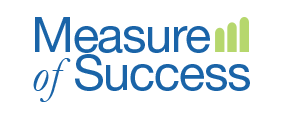© 2024 Measure of Success. Created for free using WordPress and Kubio
Blog Posts
Latest Comments
Persistent thought-provoking joke #2
Having shared passengership on an ill-fated cruise, three professionals (a mechanical engineer, a chemist and an economist) find themselves marooned on a desert island with[…]
All I really need to know I learned in… Business School?
Every once in a while you will see the “Everything important I learned in Kindergarten” claims that list insights like: clean up after yourself, share[…]
Oral tradition and written word in the workplace
Bloomberg published a fascinating article on a potential transition from society’s reliance on the written word to a society that works more heavily in spoken[…]
Do the Right Thing – Sorry Spike, it’s not that easy…
Long before Spike Lee’s movie, the concept of “do the right thing” was familiar to people both in the workplace and in other facets of life.[…]
MONEYBALL – The Measure of Success Review
“..the first guy through the wall…it always gets bloody, always.” (John Henry to Billy Beane) How things change Getting people on board Defining performance and[…]
How it really works… are you sure you want to know?
Service organizations that rely on a great deal of informal collaboration may be in for a rough ride when their employee base becomes increasingly millennial.[…]
Leadership and decision-making
Earlier this winter I had the good fortune to spend 2 days with a group involved in development and education on Leadership as part of[…]
Using “No” to shape your culture
When it comes to a corporate culture, a simple “No” can be defining. Descriptors of a culture can range from “awesome” to “toxic” on the[…]
Aligning for Performance – Where to start
The Lululemon stories coming out this week illustrate, if nothing else, that running a successful business is a complicated endeavour. There are a number of[…]
Well, what do/did you expect?
Any discussion regarding performance has to include both outcomes (e.g. what you accomplished) and conduct (e.g. how you accomplished it). These concepts can exist together[…]
© 2024 Measure of Success. Created for free using WordPress and Kubio
